Some of the rarest types of mushrooms in the world are black and white.
A combination of contrasting colors may even make some attribute a poisonous profile to these mushrooms.
However, some black and white mushrooms are edible and even healthy while others are dangerous or deadly.
A smaller number of black and white mushrooms can even have medical significance and be used in different types of medication such as cancer medication or circulatory issues medication.
The following species show varying degrees of black-and-white coloring. Some only reach this color combination at a later growth stage, typically towards their maximum growth just before they die.
While they can be found all around the world, many are also present in North American woodlands, particularly close to broadleaf or coniferous trees.
Table of Contents
1. Magpie Inkcap
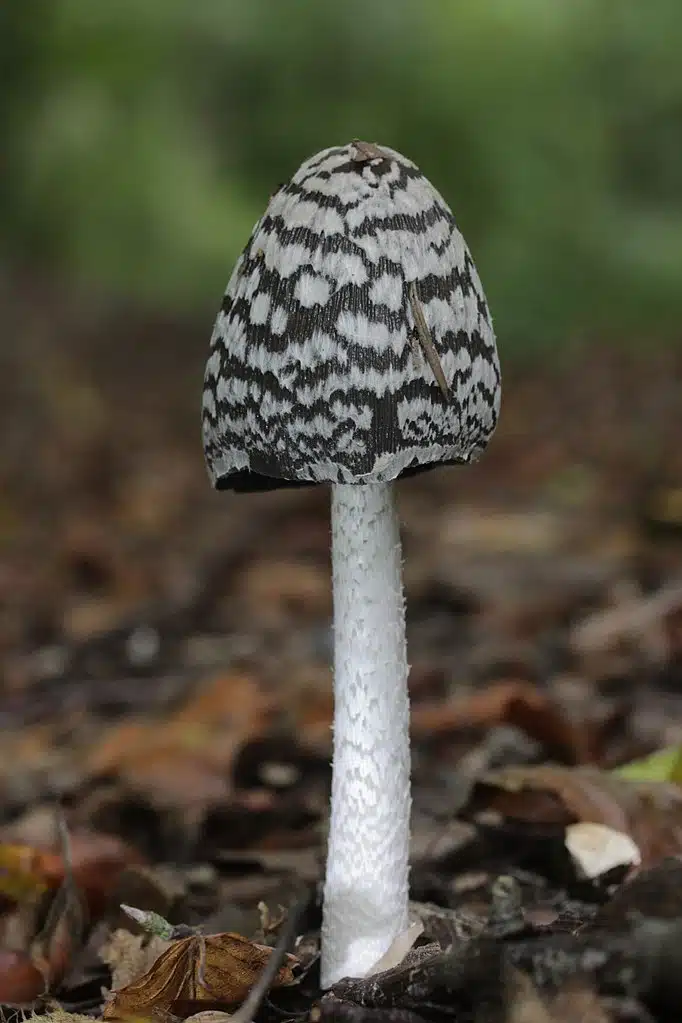
Magpie Inkcaps (Coprinopsis picacea) are some of the most common types of black and white mushrooms. Both their appearance and their poisonous status make them popular.
These are some of the most poisonous types of black and white mushrooms you should stay away from.
A common sight in beech woodlands, Magpie Inkcap are among the species with a bell-shaped cap which has the initial shape of an egg.
The stem itself is white with extra white layers while the black cap has white, gray, and silver patterns across.
Magpie Inkcap mushrooms also show distinct types of gills that melt for spreading.
The melt of the species is also black and inspires the name of the mushroom.
Their presence is associated with decaying vegetation in woodlands. They can be found in alkaline soils in areas with plenty of grass or leaves to feed off.
While poisonous to humans, Magpie Inkcaps do have medical importance.
These mushrooms also have a bad taste but may be mistaken with Shaggy Ink Caps which have whiter caps by comparison and which can be eaten.
Extracts of these mushrooms are currently being tested for various medicines, including cancer medication.
2. Shaggy Mane
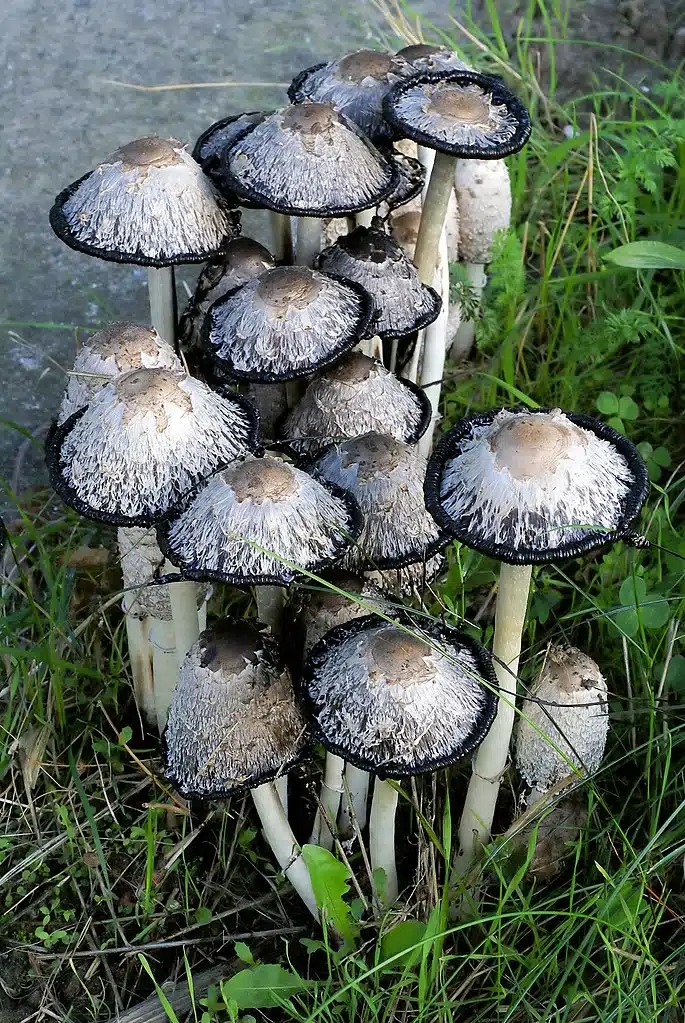
Mostly white with white flecks on its cap with a black base, Shaggy Mane mushrooms (Coprinus comatus) also show a distinctive bell-shaped cap.
The stem is also mostly white and tall. It may show a slight curvature under the heavier-grown cap.
Despite what looks like a poisonous species, Shaggy Mane is an edible mushroom.
They even have a higher nutritional value compared to others.
A species that grows in woodlands, grasslands, parks, and even gardens, Shaggy Mane has a high protein content.
Up to 30 grams of protein are found in 100 grams of the mushroom.
This means they are also calorically rich, a trait they maintain through their life stages.
As a result, 100 grams of Shaggy Mane mushrooms offer a tasty treat as well as up to 500 calories.
These mushrooms are often used as meat replacements in various dishes and diets around the world.
3. Old-Man-of-the-Woods
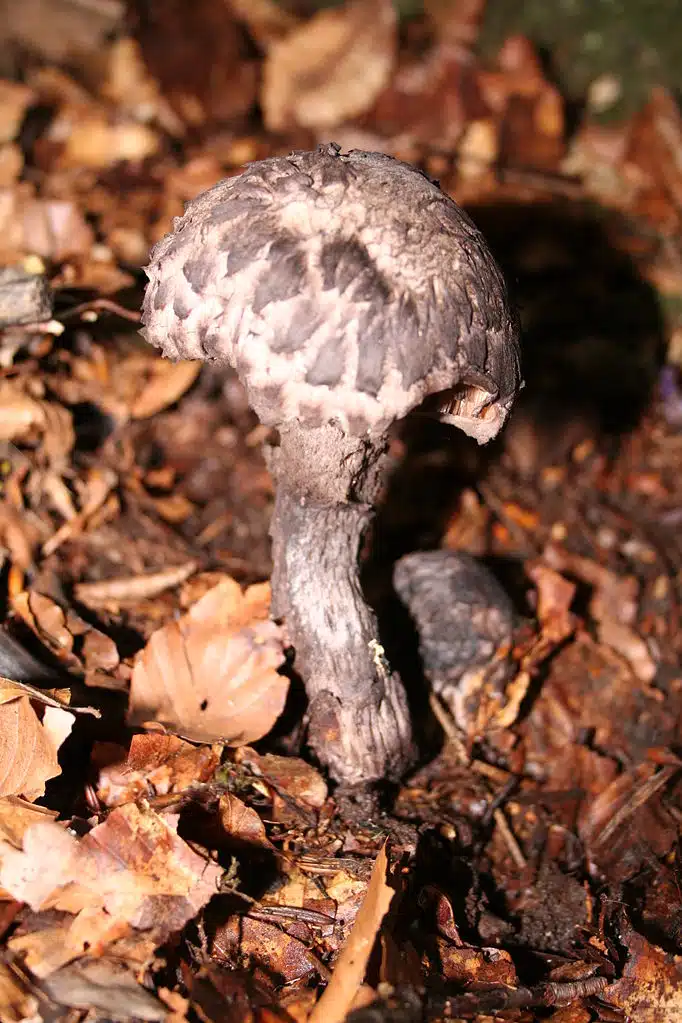
Unlike Shaggy Mane mushrooms, Old Man-of-the-Woods (Strobilomyces strobilaceus) are mostly edible and tasty in their early days.
Older mushrooms of the species become sloppy and also lose some of their aromatic profiles.
This species is identified by a black and white cap and a mostly black stem.
Apart from their shape and sizes, the age of these mushrooms can be approximated by their coloring, which shows you exactly when to pick them for the tastiest meal.
Young mushrooms tend to be a bit brighter, with more white or cream areas on the cap.
The older they get, the darker they become.
Just before they start decomposing, the mushrooms eventually turn black.
They can be found in oak woodlands and despite reaching a tall size, they need to be picked early.
A grown Old Man of the Woods may be as tall as 5.5 inches.
4. Ravenel’s Stinkhorn
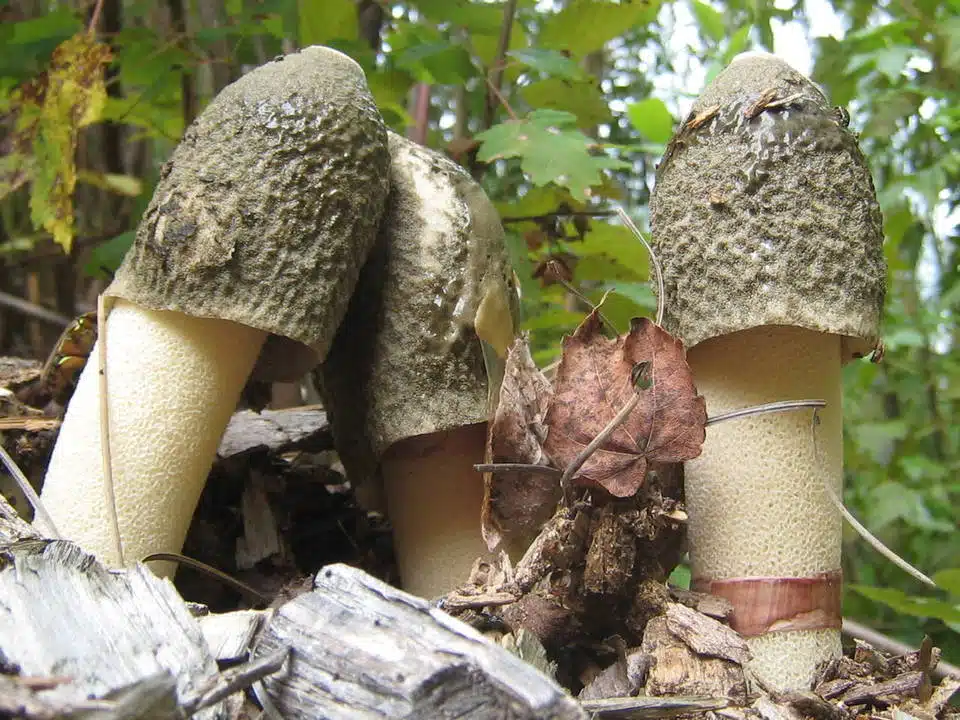
A European and North American species, Ravenle’s Stinkhorn mushrooms (Phallus ravenelii) are also mostly edible in their early days.
The cap eventually grows to a pointy shape but its early egg-like days are when it’s most suitable for eating.
These mushrooms have a black cap and a white stem but they need to be collected early as they smell bad as they grow.
Ravenel’s Stinkhorn mushrooms become slimy fast and they aren’t the best addition to a meal as they become off-putting.
These types of mushrooms are a common sight in urban areas across the Eastern coast of North America.
They can grow in small groups in parks and gardens and are associated with decaying wood, including the decaying wood stacked around homes.
5. Sooty Cup
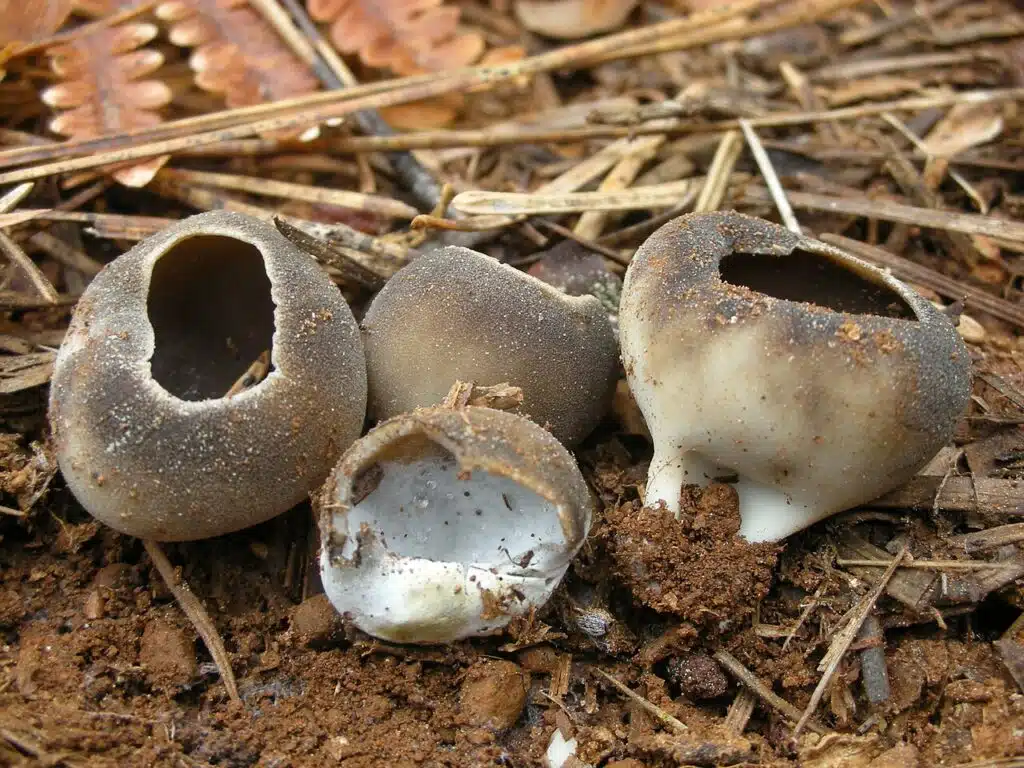
Sooty Cup mushrooms (Dissingia leucomelaena) are small cup-shaped mushrooms that cannot be eaten.
They grow in the woodlands of North America, Central America, and South America, reaching a size of up to 1.2 inches.
Coniferous woodlands are preferred by this species which always grows in small clusters.
Gray outer coloring is specific to the species which has a black nuance on the inner side and a white nuance of its short stem as well as the lower cup.
Eating Sooty Cups isn’t recommended as these mushrooms are toxic.
6. Blackening Russula
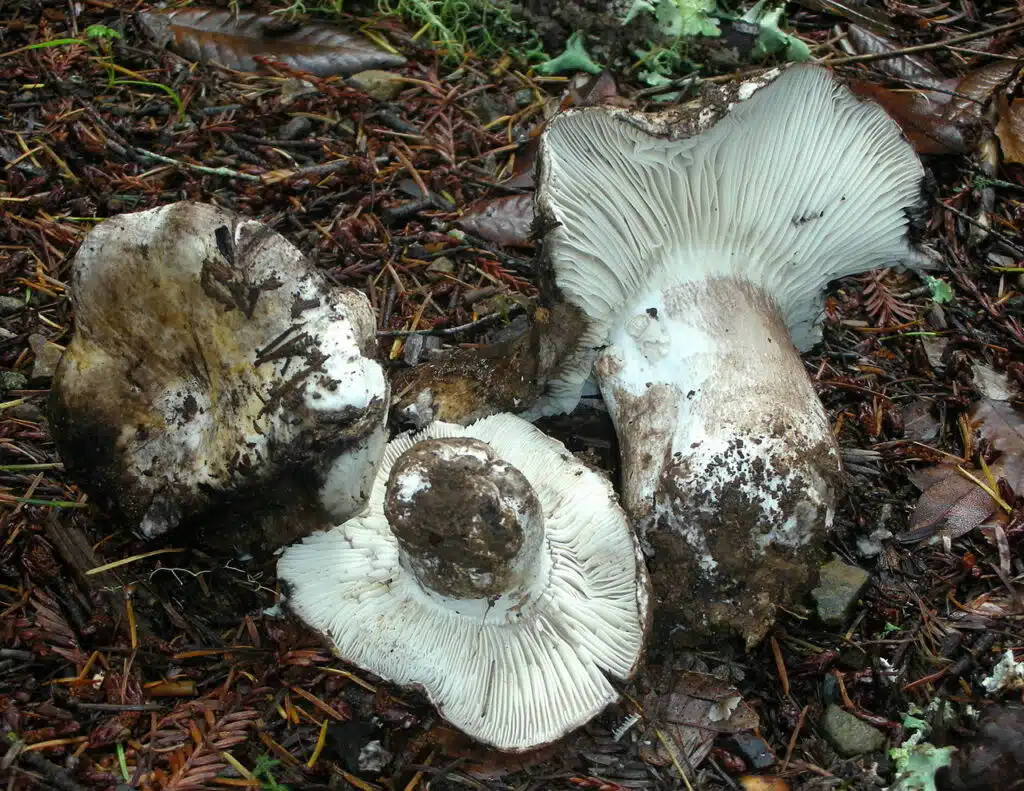
Blackening Russula mushrooms (Russula albonigra) are some of the largest black and white mushrooms in the world.
The cap alone grows up to a diameter of 8 inches.
Its name is inspired by the blackening tendency of the mushroom as it grows.
Initially white, the cap turns black as the mushroom grows without an intermediary color stage.
In rare cases, Blackening Russulas can turn very dark brown instead of black.
The species is found across American woodlands and is not a rare sight around Californian hardwood trees.
Blacking Russulas are edible but may not be the tastiest mushrooms.
Cooking tends to make the species edible but these mushrooms aren’t frequently eaten as they do look similar to other large toxic species.
7. Black Tooth
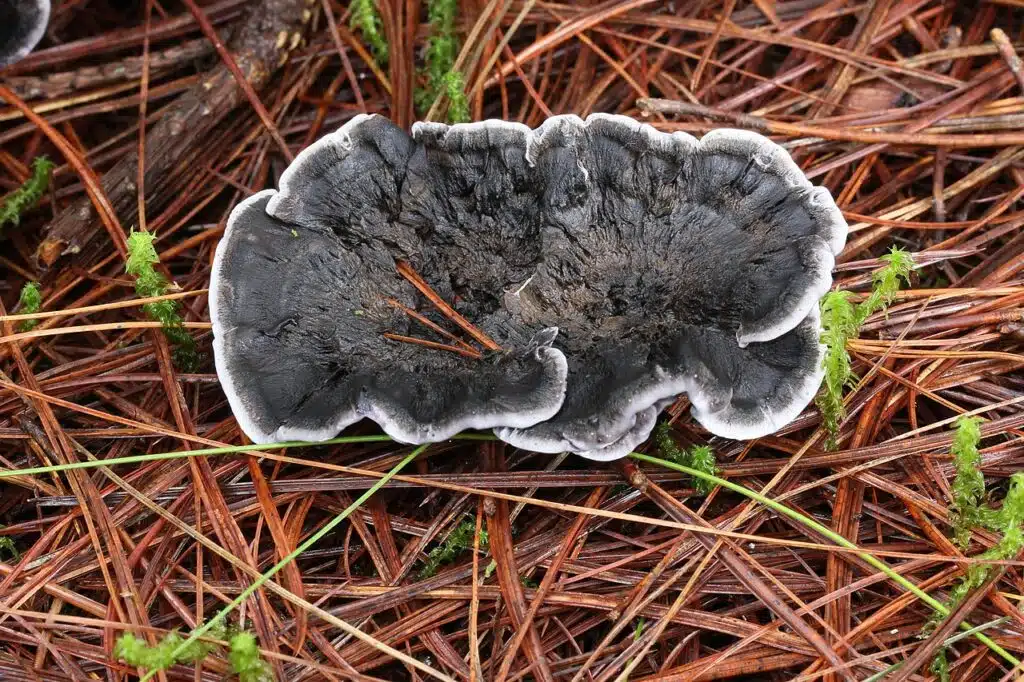
Black Tooth fungi (Phellodon niger) are named after their mostly black appearance with a white border.
Some color variations of the species include an earlier gray-dominant nuance with a white border. Its gray nuance eventually darkens to charcoal or mostly black.
At best, the cap of Black Tooth mushrooms reaches a diameter of 3 inches.
This species grows in woodlands and it has an inedible status with a rubber-like texture.
European coniferous woodlands tend to show the highest numbers of Black Tooth Mushrooms.
They are found under pine trees among leaf litter or growing along mosses.
Similarly to other hardy mushrooms, these are a species that appears late in the season.
Fall and winter months mark the growing period of Black Tooth mushrooms.
8. Nargan’s Bonnet
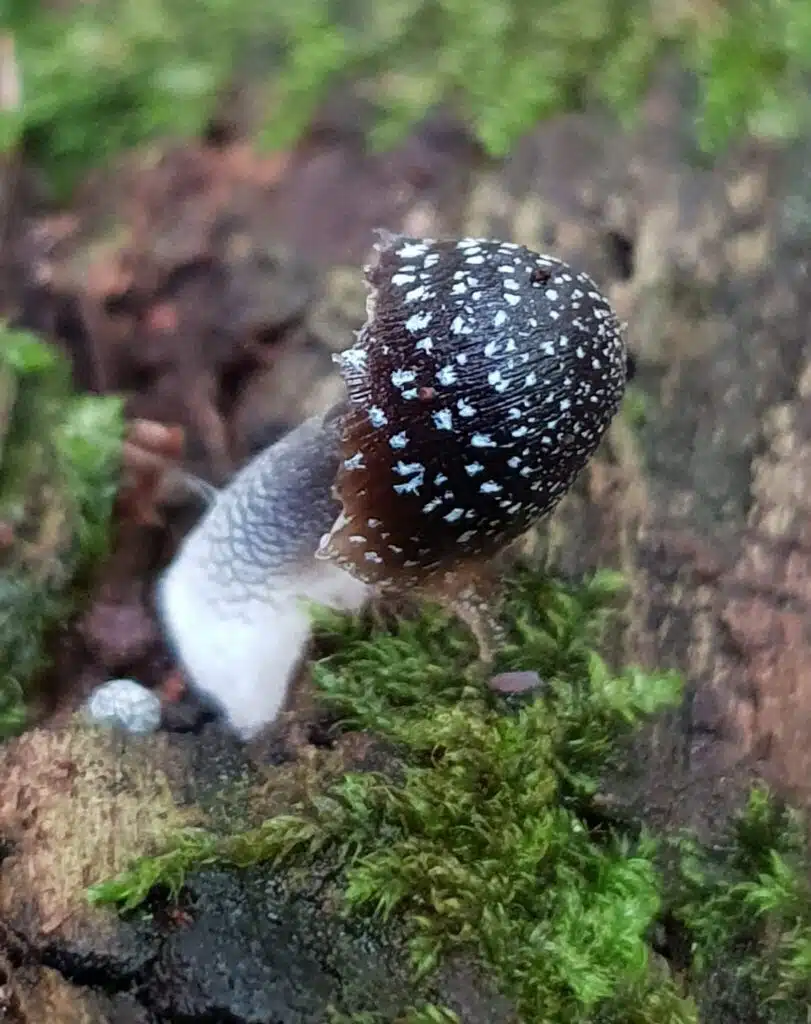
Almost completely black, Nargan’s Bonnet mushrooms (Mycena nargan) have a white cap margin.
The shape of this species is conical. Both its coloring and its shape are different in its young stages, on the other hand.
Very small Nargan’s Bonnets are completely white before starting to change their appearance.
An egg-shaped cap is specific to these mushrooms in their early stages. It shows a black cap nuances with additional white flecks that disappear as the cap grows.
The stem also shows black and white sections with the upper area being darker.
Mostly found in Australia, Tasmania, and New Zealand, these mushrooms show a preference for coniferous and eucalyptus woodlands.
Most commonly, they reach a height of around 2 inches and grow in small groups.
9. Black-stalked Marasmius
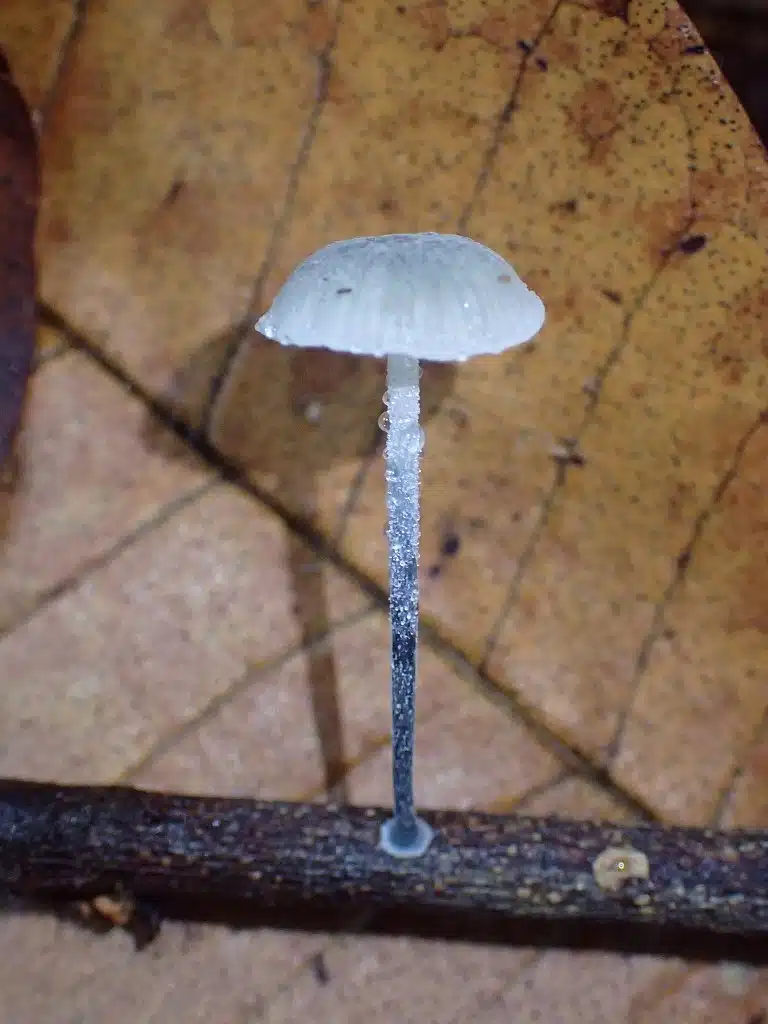
Black-stalked Mrasmius mushrooms (Tetrapyrgos nigripes) are some of the smallest types of black and white mushrooms in the world.
They are found in North America, Europe, and Asia where they grow on the forest floor or even on dead wood.
The species has a contrasting cap about the darker stipe.
Its cap has a pure white appearance with similar white gills.
Black and white nuances cover the stipe up to the top, which is also white and similar to the cap.
The black part of the stipe has a black ground color with additional white flecks.
Always growing in small groups, they can count 5-10 mushrooms in a single place.
On the other hand, they are also very small. 0.3 to 0.5 inch height is specific to these mushrooms.
Some of the places they prefer include woodlands. Broadleaf and coniferous woodlands are among their preferred locations.
Older forests with plenty of dead trees and vegetation spring the most mushrooms.
10. Oak-loving Elfin Saddle
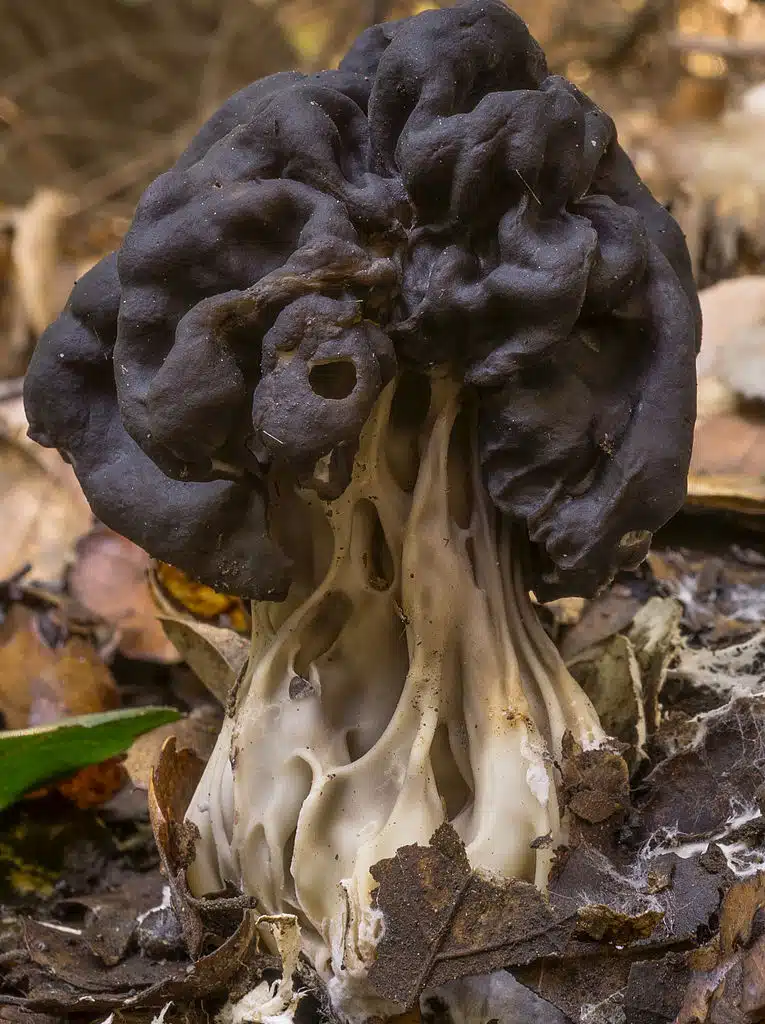
A black-and-white appearance dominates the small Oak-loving Elfin Saddle (Helvella dryophila).
This fungus shows a globular type of black cap with a tree-like white or cream stipe.
Much of its appearance has been compared to the appearance of a small black-and-white tree.
As its name implies, the species is fond of oak woodlands and has a presence in North America.
Oak woodlands West of The Rocky Mountains are home to The Oak-loving Elfin Saddle.
The species should be avoided at all costs due to its highly poisonous status.
Eating even a small amount of the species can lead to severe reactions and loss of consciousness.
11. Dune Stinkhorn
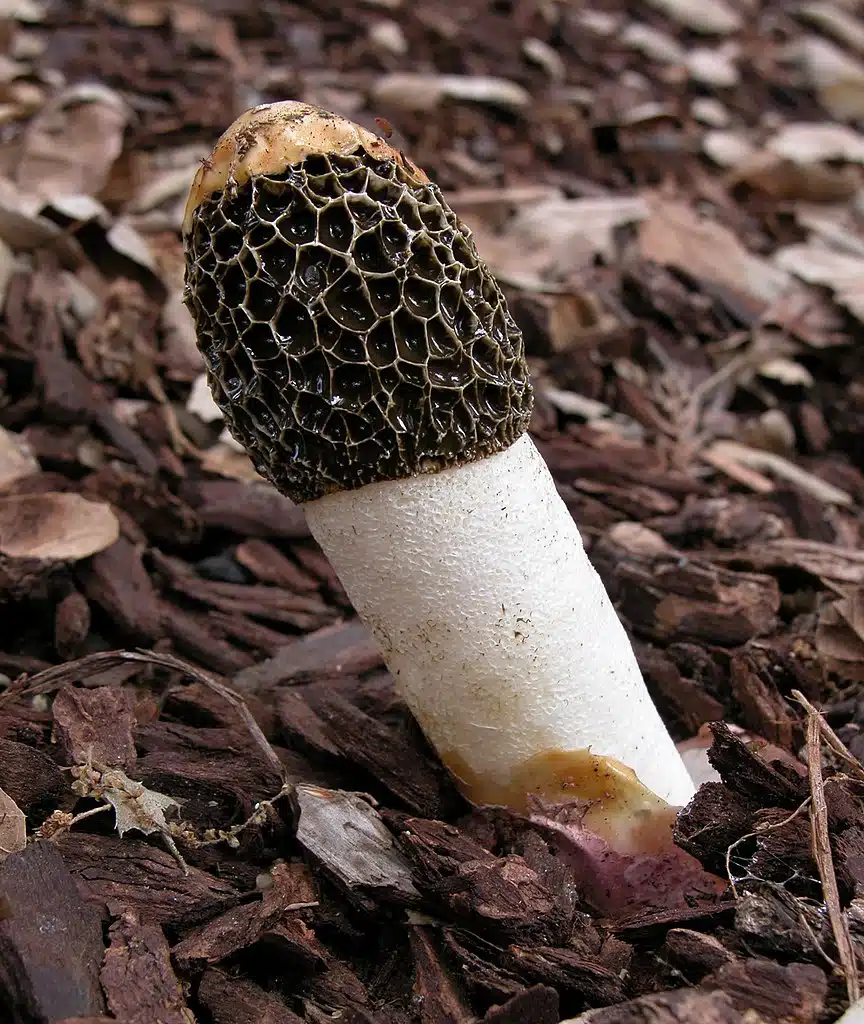
Dune Stinkhorns (Phallus hadriani) are native to Europe and North America and show black-and-white coloring in their later stages.
These mushrooms are only spotted in dunes of coastal areas where they emerge with their initial egg shape.
A white and pink color combination is seen on the initial egg shape of the species.
As it matures, its stems grow tall with a visible white color while the cap is brown before rupturing for flies to carry the spores and eventually becoming black.
Once the cap ruptures, it also exposes a pattern of spores which then turn black as insects start coming in.
This is also a species named after its stinky smell.
Dune Stinkhorns have a bad smell which is believed to attract the flies that carry their spores.
The bad smell alone is sufficient to be off-putting.
However, Dune Stinkhorns are eaten in some regions, but mainly in their early egg-shaped days.
The season of the species spreads from early summer to early fall.
12. Bleachy Entoloma

A black cap is seen on Bleachy Entolomas in their later growth stages from an initial dark brown cap.
Its dark cap is contrasted by a white stipe with a wide diameter.
The stipe itself also shows a black section towards the top as the cap starts to become black.
Found in woodlands, Bleachy Entolomas (Entoloma ferruginans) are fond of oak woodlands in the Western parts of North America.
This is a species that shows a preference towards the decaying oak leaves and it grows on the ground.
According to its name, the species smells of bleach. Even more, its smell is so strong that the bleach-like odor radiates feet away.
While not edible due to its repulsive smell, Bleachy Entolomas are also rare.
These types of mushrooms grow scarcely and their presence in oak woodlands is also rare.
13. Common Stinkhorn
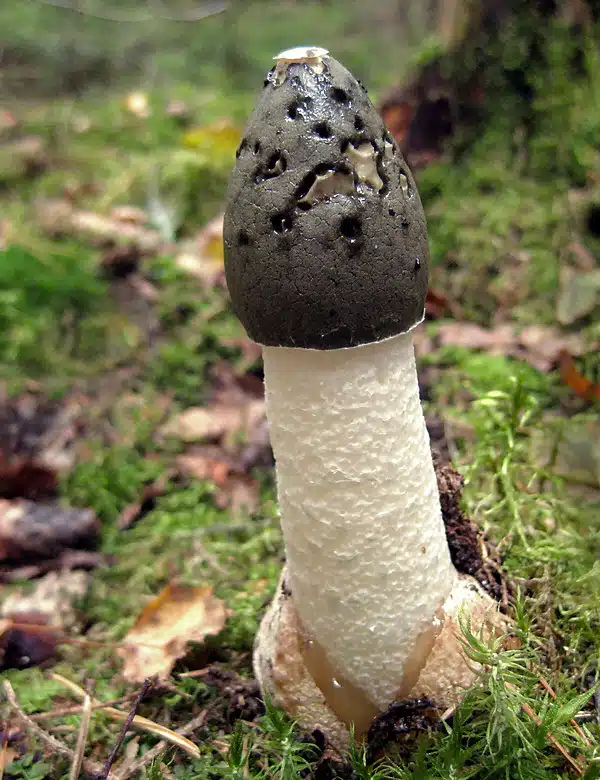
Common Stinhorn fungi (Phallus impudicus) are part of the Phallus genus based on their erect shape.
These stinky mushrooms are present across Europe, Asia, and Australia where they may be eaten in their early egg stage.
Early growing times show this species with olive and white flesh while the skin is white and pink.
As it grows into its phallic shape, the fungi show a white stem and an olive cap that ruptures.
The result is exposed and stinky slimy spores which are visited both by bugs and flies which eat and spread them.
A very unpleasant odor is specific to these fungi as a means to attract flies and bugs. Even more, the smell radiates feet away being off-putting to people.
In its later growth stages, Common Stinkhorns become black and white.
This fungi species is further known for its various medical uses. It has some benefits as an anticoagulant as well as a preventive type of food against gout and other types of inflammation.
An old species in Europe, the mushroom was also considered an aphrodisiac, despite having what’s described as the pure smell of carrion.